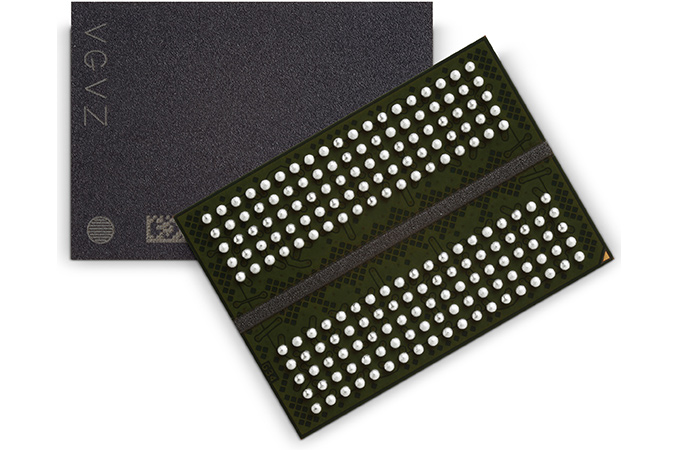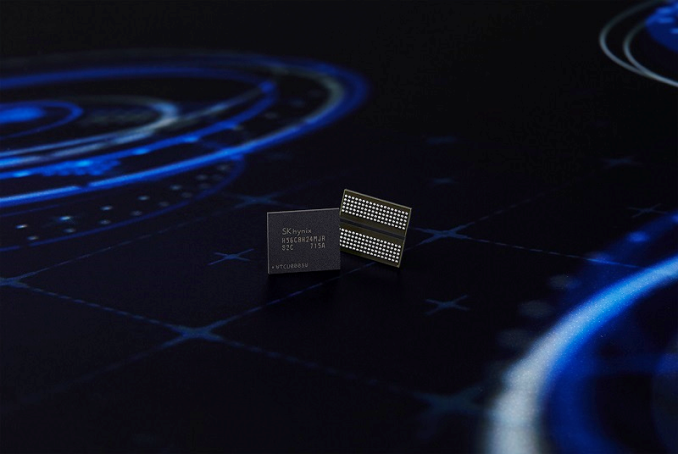Samsung & SK Hynix Graphics Memory Prices Increase Over 30% In August
by Nate Oh on August 16, 2017 9:00 PM EST
In the midst of a global DRAM shortage, Digitimes reports that the market prices for graphics memory from Samsung and SK Hynix have increased by over 30% for August. This latest jump in memory prices is apparently due to the pair of DRAM manufacturers repurposing part of their VRAM production capacities for server and smartphone memories instead. As Digitimes’ sources report, this VRAM pricing is expected to increase further in September, impacting graphics card and gaming notebook manufacturers. Consumers have already felt the pain through skyrocketing DDR4 prices, and TrendForce/DRAMeXchange expects the upward trend of PC DRAM chips to continue to 2018.
Generally speaking, this production prioritization is not new. Late last year, the top three memory suppliers, Samsung (55% market share), SK Hynix (35% market share), and Micron (10% market share) shifted production capacity to prioritize servers and smartphones, causing the initial spike in PC DRAM prices. Overall, DRAMeXchange attributes the tight supply to lack of short term capacity expansion, as well as yield issues with new processes. The research firm had also noted that capacity expansion will be rather subdued as manufacturers try to keep commanding the higher margins of an undersupply environment.
In light of recent GDDR6 announcements by Micron and SK Hynix, these supply/price issues could have knock-on effects for both current and upcoming graphics cards. Additionally, as both Samsung and SK Hynix are the only HBM2 suppliers, HBM2-equipped cards may be adversely constrained by supply. Earlier this month, an SK Hynix executive stated that customers were willing to pay 2.5 times more for HBM2 over HBM1; this sentiment may soon be put to the test. The situation with Micron is a little less clear, as they not only have their unique GDDR5X memory, but also may not have raised VRAM prices. If they haven't, they may have an opportunity on their hands.
Related Reading:
- SK Hynix: Customers Willing to Pay 2.5 Times More for HBM2 Memory
- Samsung Increases Production Volumes of 8 GB HBM2 Chips Due to Growing Demand
- Micron Discusses GDDR: 16 Gbps GDDR5X, 16 nm GDDR6 and GDDR5
- SK Hynix Advances Graphics DRAM: GDDR6 Added to Catalogue, GDDR5 Gets Faster
- SK Hynix to Ship GDDR6 Memory for Graphics Cards by Early 2018
Source: Digitimes











55 Comments
View All Comments
HomeworldFound - Wednesday, August 16, 2017 - link
Shortages that put extra money in your pockets, 2.5x more for a generational increase, what a shame that is for the entire industry, more free money due to executive decisions.ddriver - Thursday, August 17, 2017 - link
Yeah, I bet they put GDDR memory in servers and phones, I bet that's just it.It could not possibly be another manufactured artificial shortage to jack up prices and increase profits, those noble, honorable corporations would never stoop so low for profit.
There isn't even any shortage to be honest, they achieve that entirely by by keeping supply tight, an actual shortage would deprive them of some sales, while tight supply will allow them to sell as much as they can, simply at much better price.
Teutorix - Thursday, August 17, 2017 - link
Thats such a stupid statement... They arent selling GDDR to mobile and server markets, they are upping production of non VRAM products and reducing production of VRAM.ddriver - Thursday, August 17, 2017 - link
Yeah, decisive crisis management executive decision no doubt. It went something like this:Manager: Boss, the artificial shortage for flash and dram worked out great, it boosted our profits by 25%. I think despite the fact that dram is a much smaller market, we should do the same there to milk some extra profit as well.
Boss: What? We aren't doing that already? What is wrong with you people? Get right on it!
Manager: So, how are we going to justify that?
Boss: Why are you asking such rhetorical questions? You know that people are idiots that will buy just about anything. Obviously, dram is not a market with that strong demand, so we cannot claim there is shortage, so we are going to say that we are allocating production capacity to address the "shortages" in flash and dram. Surely nobody is going to notice that this will not solve the "shortages" on flash and dram.
Manager: Brilliant as always.
Chris383 - Thursday, December 14, 2017 - link
What about all the new SSD memory production? I think it could be possible that is part of the cause of prices going up.GhostOfAnand - Wednesday, August 16, 2017 - link
Oh those krazy Koreans and their price fixing.Samus - Wednesday, August 16, 2017 - link
Yeah, same ol' price fixing formula they've been caught and fined for in the past.1. Produce less memory
2. Claim their is a shortage
3. Increase price of memory
The problem is the fines aren't enough to offset the ridiculous margins created by padded pricing...
Adramtech - Thursday, August 17, 2017 - link
If this is price fixing, then what did you call it during 2015 when this industry was losing money on the sale of every single chip and many companies failed? It's a comoddity market, when demand exceeds supply, prices rise. The only thing they can control is supply.fuji_T - Thursday, August 17, 2017 - link
I don't work in DRAM/NAND production directly anymore, but when I did, I can assure you we didn't attempt to throttle production in an attempt to keep prices up. With how much it cost to buy tools, run the fab, etc, we tried to push out as much product as possible.New process nodes often take time to get yields/performance up. If you have a fixed number of tools and are trying to qualify a new node, there goes some of your capacity.
ddriver - Thursday, August 17, 2017 - link
Is that right? What prevents the industry from using existing tools and production lines until new production lines are operational and yield is stable? Nobody puts all its eggs into a brand new basket with immature yield. And you don't even have to work in the industry to know that.But good for you that you found a place to advertise your expertise in semiconductors in addition to impeccable logic and reasoning skills and that last but certainly not least, that extreme, complete dedication of the industry to bring as much to consumers without putting raw profit as a first priority.